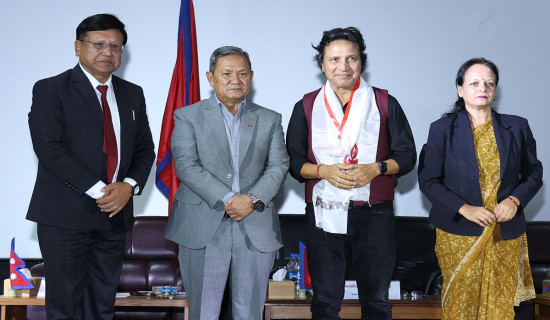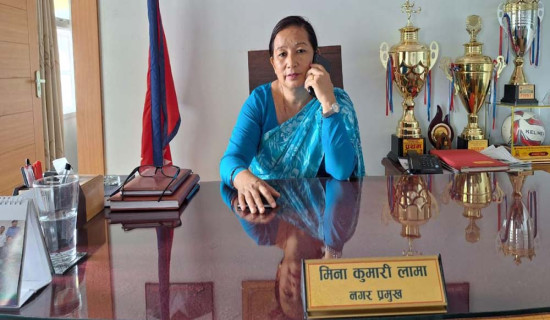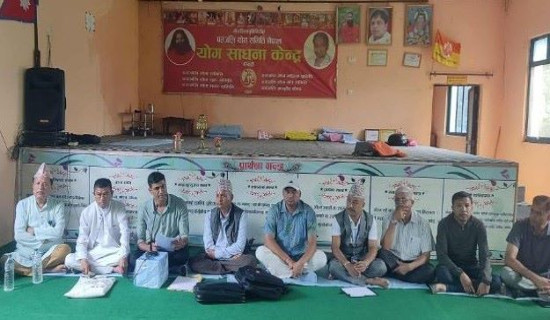- Monday, 1 September 2025
Teej Vibes In The Air
Dixya Poudel
As Teej festival nears, celebrations have been in the air for weeks. In fact, Teej parties and get-togethers have been underway since the beginning of the month of Bhadra. A unique celebration of womanhood and the sanctity of matrimony, this festival commemorates the divine ties between Lord Shiva and Goddesses Parvati. There are a number of lores about the union of Shiva and Parvati. Haritalika Teej (which is celebrated in Nepal) marks the occasion of Goddess Parvati’s escape from an unwanted union of marriage as her eyes were set on marriage to Lord Shiva. Eventually, her wishes were granted and Haritalika Teej became known as a festival for girls and women who observe Teej as a collective community in a three-day celebration.
The first day of Teej is ‘dar’ in which parties are organised to feast on cuisines as well as to sing and dance to the tune of Teej songs. Here, one has to admire such songs which are about married women’s yearning for their maternal homes and unmarried girls’ marital prospects. Every year, new songs are released to highlight the bonding of women to their husbands and the intricacies of womanhood. Social media floods with posts of females singing and dancing gracefully to such tunes.
The second day of Teej is allocated for fasting which tends to be quite rigid in nature. There are those who even forsake water along with food, taking fasting to an extreme. Such fasting has come under a public ire but it is an age-old tradition that is difficult to break. However, most girls and women prefer a simple fast in which they take tea, coffee, fruits or yogurt. The act of fasting expresses women’s devotion to the martial ties. And in doing so it highlights how sacred a martial union is for the females. The third day is Rishi Panchami in which girls and women worship Saptarishi by offering flowers, diyos, bel leaves and camphor. They either organise a puja at home or participate in a collective puja in temples. With the conclusion of this day, Teej festival comes to a close but not before creating delightful memories and obligatory pictures and videos for social media posts.
Although the festival of Teej is a celebration among women, its main objective for married women is the longevity of their husbands and for unmarried ones the attainment of a suitable husband. Due to such focus on the welfare of the males, feminists have decried that it pushes the very females who are celebrating to the periphery. In a way, their arguments are quite rational as Hindu traditions are often ruled in favour of patriarchy. One cannot argue against age-old traditions, norms and rituals but there can be modifications that adapt the modern ways of living to hallowed practice of one’s faith.
In addition, there have also been outcries over the increasing lavishness of Teej parties which ought to be moderated. Particularly, social media has amplified the extravagance of such celebrations that has led to unhealthy comparison and rivalry among the ladies, putting a blight to an otherwise sacred festival. Ultimately, Teej should be about goodwill among Nepali girls and women as it brings them together in an auspicious blend of traditions, rituals and faith.

















